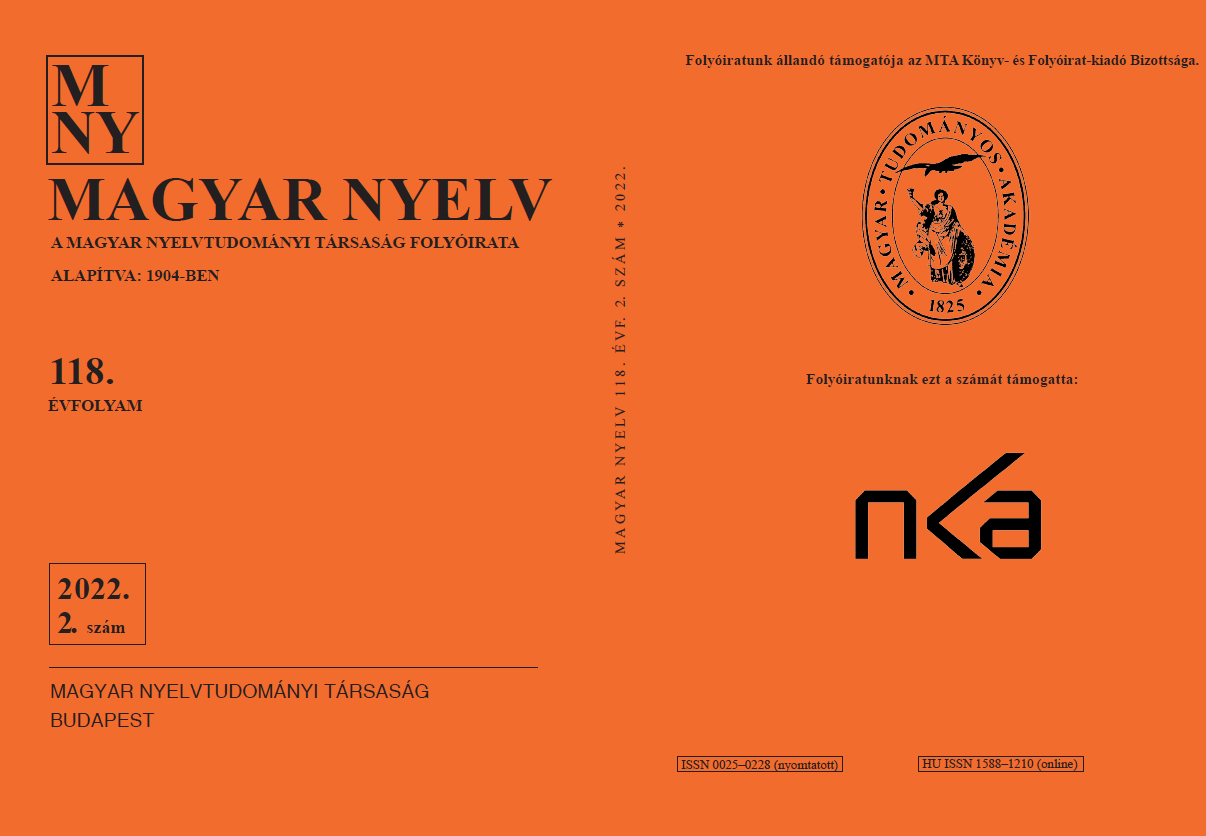The behaviour of the GPM morpheme in the language use of Hungarian PC gamers
DOI:
https://doi.org/10.18349/MagyarNyelv.2022.2.192Keywords:
GPM morpheme, Optimality Theory, sibilants, estrangement methodAbstract
This paper examines nouns of foreign origin with sibilants at the end and the way they behave when Hungarian native speakers inflect them with the General Possession Marker (GPM) morpheme. Unlike in the case of other sibilant-final Hungarian nouns (or what speakers identify as Hungarian nouns), some Hungarian native speakers (one of whose hobbies is to play video games in English) add a j-initial allomorph of the GPM morpheme to these nouns which is a highly unexpected solution. The analysis presented here uses the framework of Optimality Theory. Whenever Hungarian native speakers choose to apply a kind of estrangement method in forms involving a sibilant-final noun and the GPM morpheme, they rank the constraint Faith‑IO(syl) above the constraint *Sj, so the winner will be the candidate in which a j-initial allomorph of the GPM morpheme occurs; otherwise, they rank *Sj above aith‑IO(syl) and the winner will be the candidate with an allomorph of the GPM morpheme without j.
Downloads
Published
Issue
Section
License

This work is licensed under a Creative Commons Attribution-NonCommercial-NoDerivatives 4.0 International License.
Magyar Nyelv is a Diamond Open Access periodical. Documents can be freely downloaded and duplicated in an electronic format, and can be used unchanged and with due reference to the original source. Such use must not serve commercial purposes. In the case of any form of dissemination and use, Hungarian Copyright Act LXXVI/1999 and related laws are to be observed. The electronic version of the journal is subject to the regulations of CC BY-NC-ND (Creative Commons – Attribution-NonCommercial-NoDerivatives).
The journal permits its authors, at no cost and without any temporal limitation, to make pre-print copies of their manuscripts publicly available via email or in their own homepage or that of their institution, or in either closed or free-for-all repositories of their institutions/universities, or other non-profit websites, in the form accepted by the journal editor for publication and even containing amendments on the basis of reviewers’ comments. When the authors publicize their papers in this manner, they have to warn their readers that the manuscript at hand is not the final published version of the work. Once the paper has been published in a printed or online form, the authors are allowed (and advised) to use that (post-print) version for the above purposes. In that case, they have to indicate the exact location and other data of the journal publication. The authors retain the copyright of their papers; however, in the case of an occasional secondary publication, the bibliographical data of the first publication have to be included.



